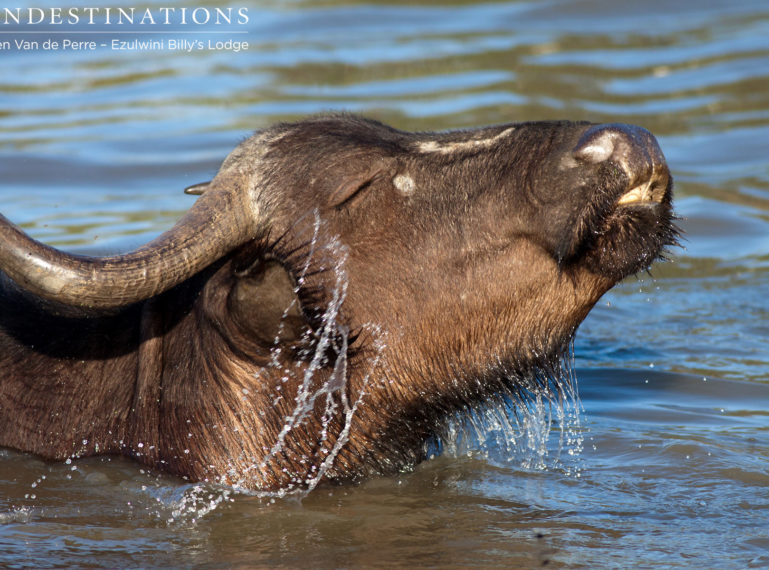
Rangers in the Balule often stumble across huge breeding herds of buffalo that arrive en masse to the waterholes peppered around the Ezulwini Lodges. The herds number up to 400, which makes for remarkable sightings for guests. The lone bulls, often referred to as Dagga Boys, lather themselves in mud and pass their days by soaking on the banks of the river. The buffalo is one of Africa’s big five animals and they’re very much a formidable force within the Balule.
These bovids have a need to drink twice a day due to the course vegetation they digest, which means they need access to readily available water sources. The high concentration of buffalo sightings in the Balule is no surprise due to the fact that Ezulwini River Lodge is located on the banks of the river and Ezulwini Billy’s Lodge overlooks a small waterhole.
Here are five interesting facts about the Cape (African) buffalo:
1. They’re one of the most dangerous animals in Africa
The Cape buffalo gives no warning sign before it stampedes. They have a steely glare and remain statue like before suddenly charging and trampling everything in its wake. Lions will emit a low uncomfortable grumble, elephants will flap their ears and leopards get into pounce mode.
With buffalo they give no indication of their emotional state and they have a memory like no other animal – they don’t forgive!
Interestingly enough, approaching a huge herd of buffalo is probably safer than confronting a group of bulls. In the Balule, there are plenty of lone bulls. With the sheer abundance of water, the waterholes and the river, these bovids thrive here in their natural habitat.
2. Old bulls are kicked out of the herd
Isn’t nature a cruel and heartless world? We’ve mentioned buffalo being a very dangerous species but the ones to avoid are the older, lone bulls. Confronting a herd of buffalo is far safer than coming face-to-face with a group of grouchy buffalo bulls.
When bulls are past their prime they are ousted from their herd. Together with other ousted bulls, Dagga boys generally spend their days wallowing in mud trying to rid their body of parasites. The bulls are defensive – and rightly so – they don’t have the protection of their herd anymore. These buffaloes are known as “Dagga boys” because of their love of mud. Dagga means mud in Zulu!
3. The pathfinders direct the herd
And so the buffalo ask, “Where should we sleep tonight? Where will we drink? Where should we go?”. These questions are all answered by the pathfinder, a buffalo that defines the route for the herd.
With such huge herds on the move, there needs to be some sort of direction and end goal in sight. A pathfinder isn’t always the dominant animal within the herd, but they do have a clearly defined role. The smaller groups within a herd also have their own designated pathfinders.
4. They are very good friends with red-billed oxpeckers
Oxpeckers have a symbiotic relationship with buffalo and other mammals in the bushveld. It is believed that the oxpeckers remove parasites from their host and thrive on a diet of dandruff, scabs and scar tissue.
There are two arguments when it comes to the role of oxpeckers on buffalo. One is that the oxpeckers keep a raw wound clean from infection and another is that they continuously pick the scab, which doesn’t aid the healing process. Thus the red-billed oxpeckers could either be symbiotic or semi-parasitic! The jury’s out on the function they perform on these hoofed bovids.
5. They love water but they’re not called water buffalo
First time safari-goers often spot the herds dwelling around waterholes, mud bathing and swimming. Sometimes we hear guests exclaim “water buffalo”! In fact, the only buffalo found in Africa is the Cape (African) buffalo species.
Buffalo digest vast quantities of coarse vegetation and are bulk grazers. When the herds approach the waterholes, they affair is preceded by a massive storm cloud of dust and followed by a delightful submerging in the water. Buffalo have been known to drink up to 35 litres of water a day.










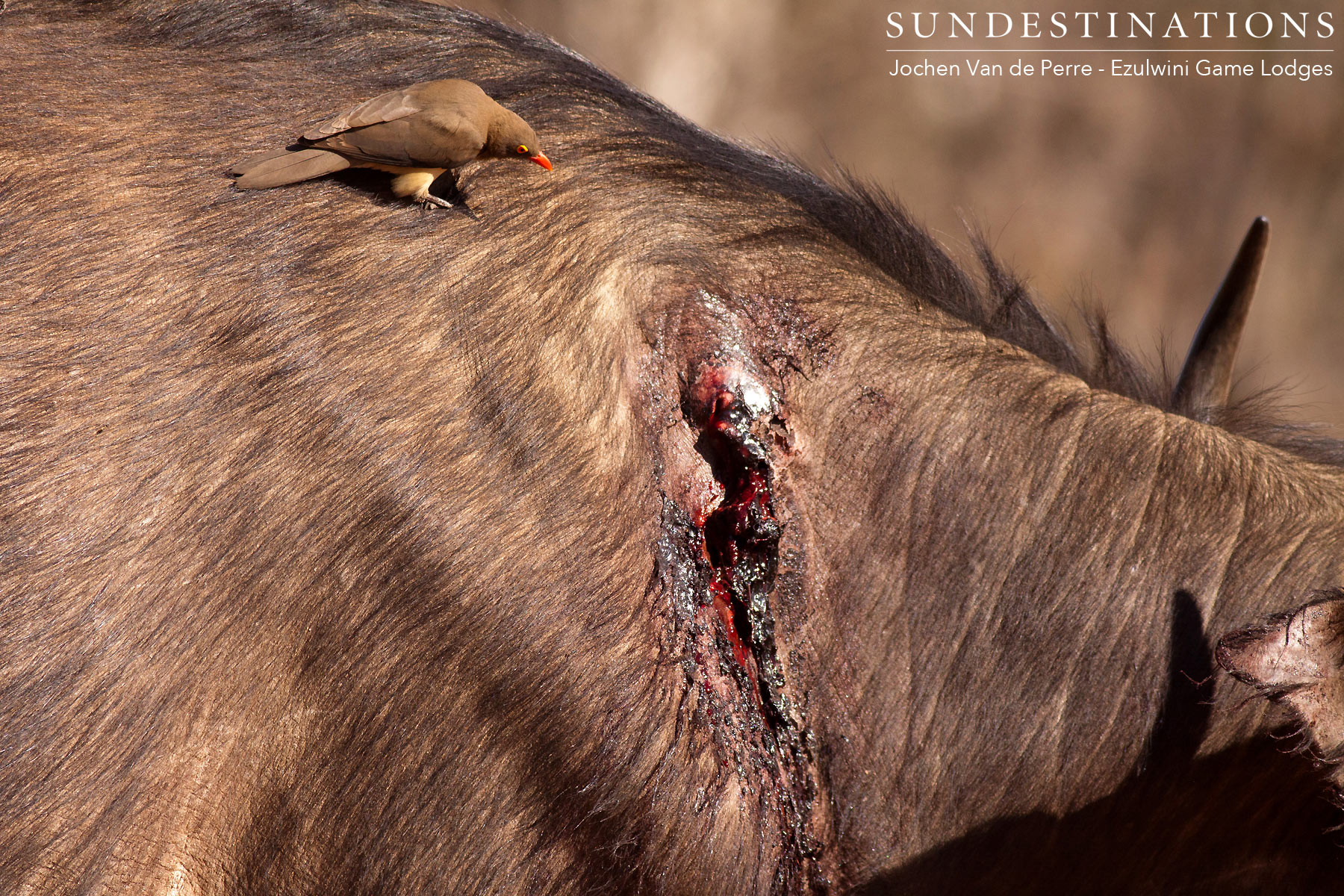
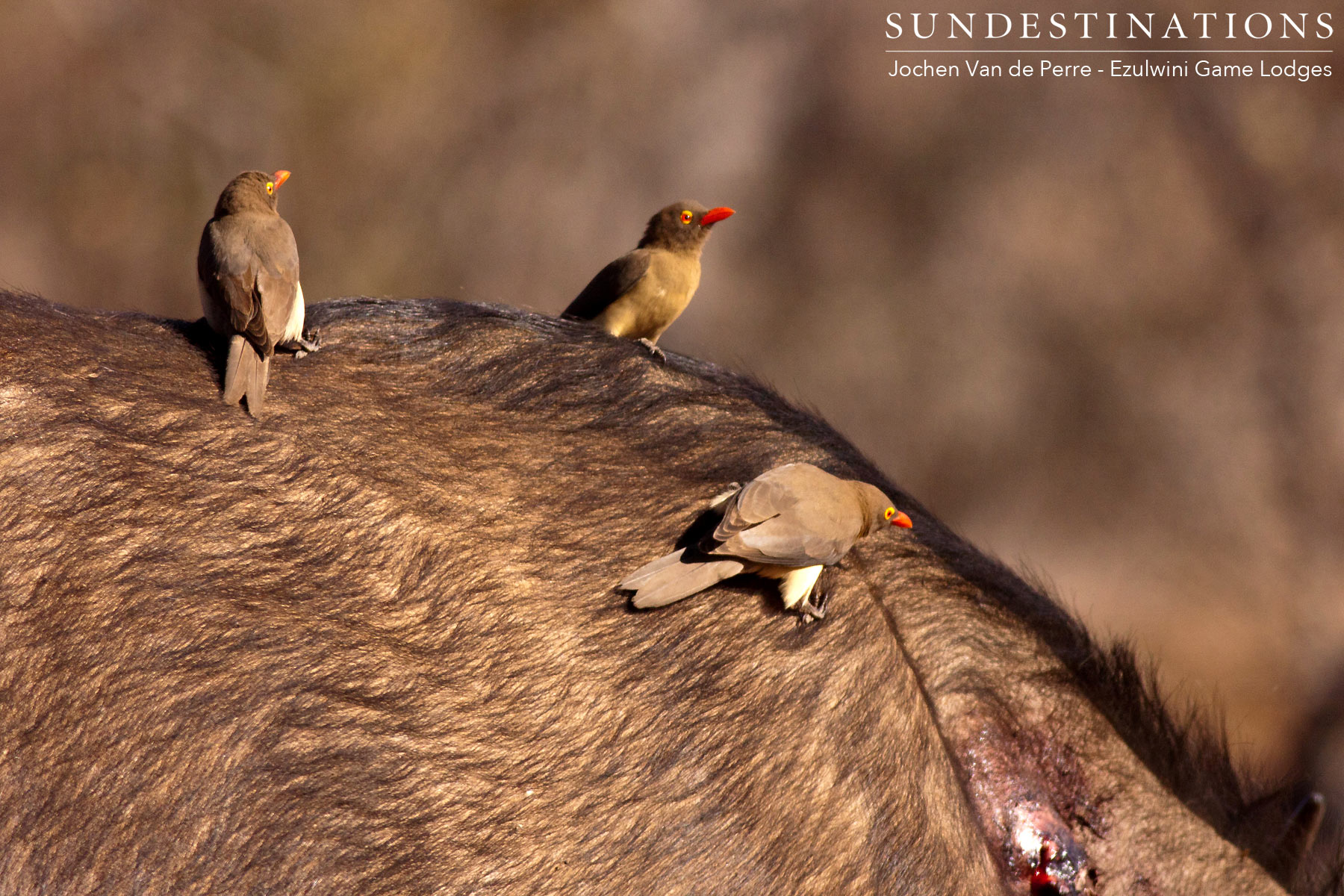
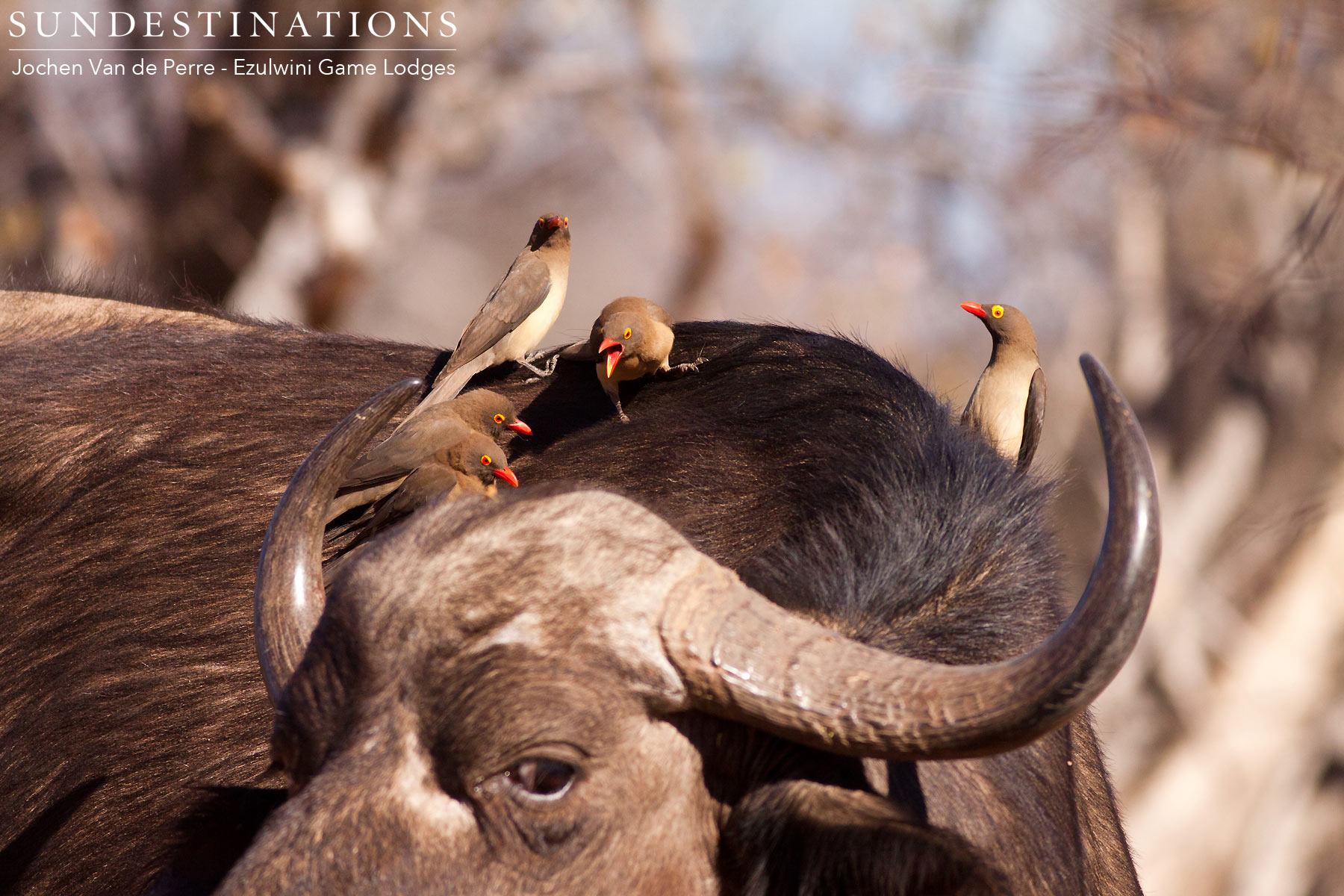

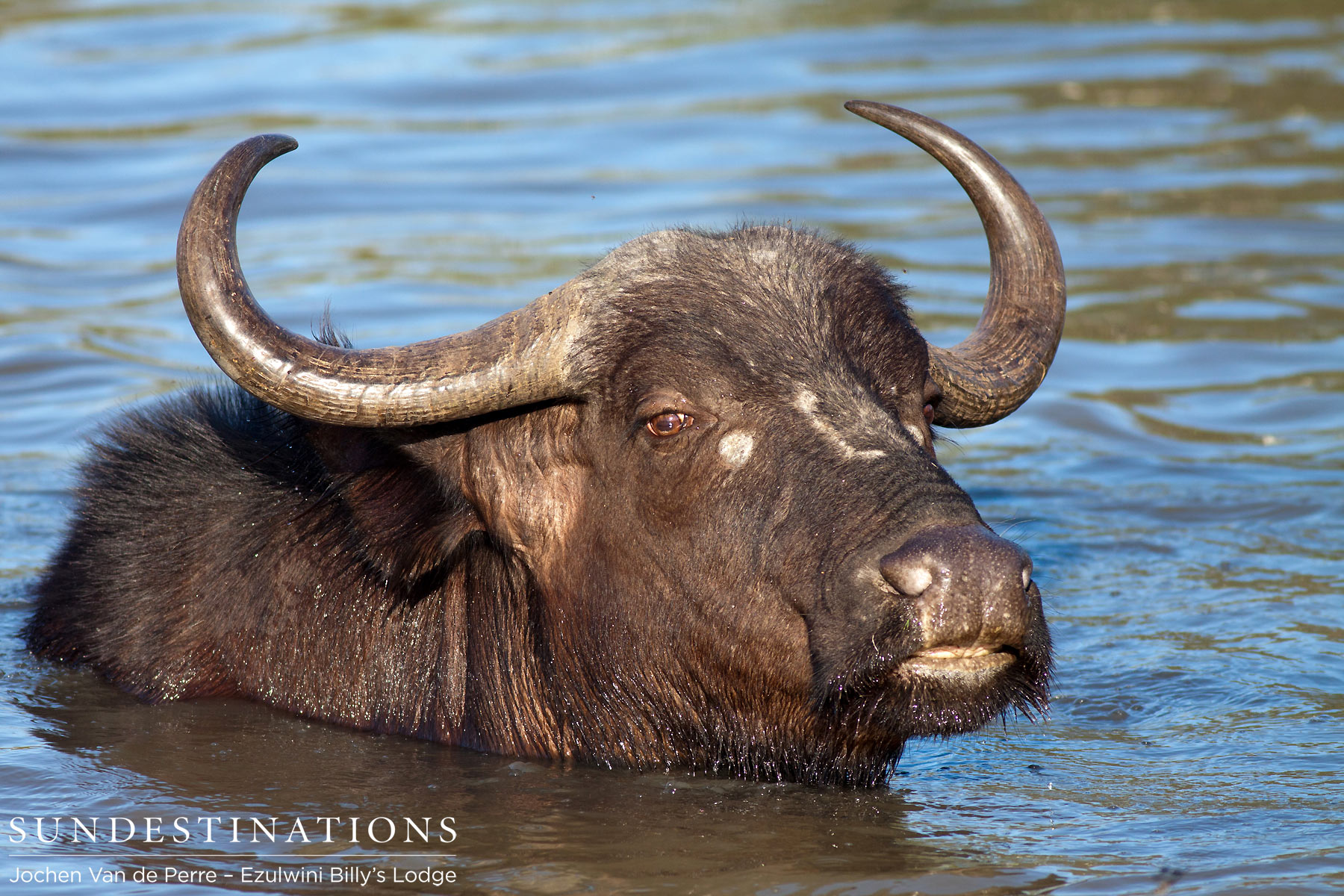
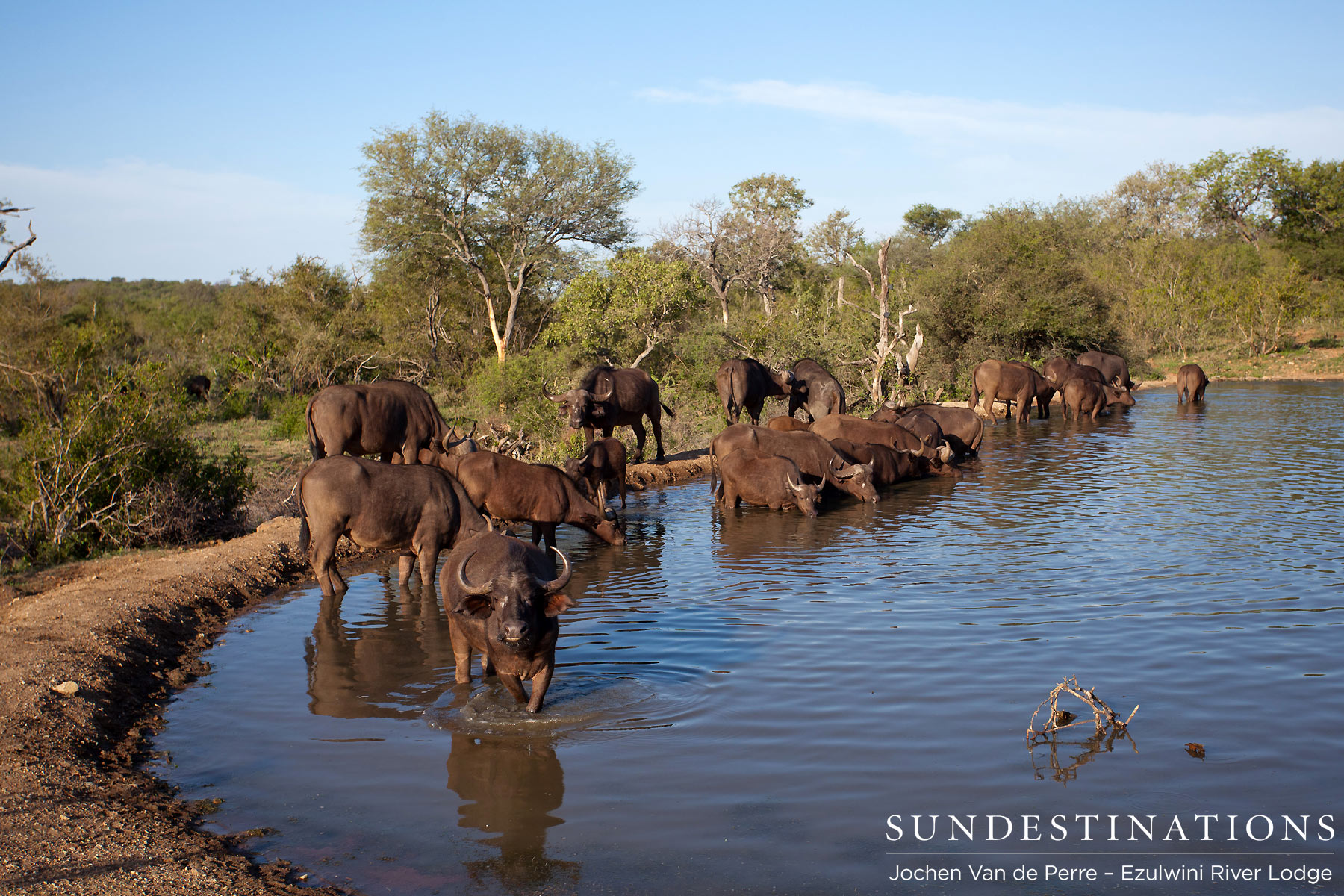
Leave a Comment